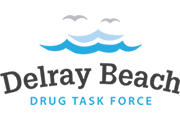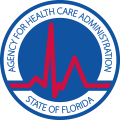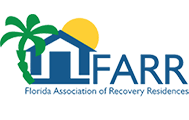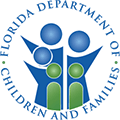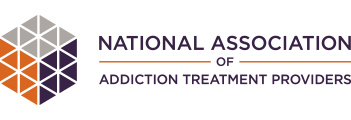Why do addicts continue using despite terrible negative consequences? Nearly all drug related problems can be treated and the disease itself can be put into remission but, despite this, drug addiction, including addiction to the drug alcohol, is epidemic in society today. Addiction doesn’t discriminate as to race, gender, ethnic background, social status, financial status, or education. It can develop despite a person’s best intentions and in spite of their strength of character.
When repeated drug use disrupts complex systems in the brain, it eventually changes the brain permanently. When this happens, what the addict wants for her life can’t compete with the desire to get high. We are beginning to understand the part the brain plays as to why some people sacrifice everything to satisfy their hunger for drugs.
Brain Imaging Technology
Although we don’t yet know all the parts of the brain involved, we do know that addiction is a brain disease. Along with what happens in the brain, environment, physiological factors, and history, including genetic markers, come together to create addiction.
As scientists study addiction and the brain using new brain imaging technologies, we are learning that the part of the brain that is there to keep us alive is the very part that houses addiction. We now know how drugs enter certain neuropathways known as the reward circuit, then activate these specific circuits to create cravings.
Scientists can now point us to the actual location where craving takes place. This reward system, located in the oldest part of the brain known as the limbic system, is the center where we experience anger, joy, pleasure, and euphoria.
Also located in the pleasure center are our basic instincts of survival such as sex, hunger, and thirst – the same area where addiction is located. The operation of the reward circuit is based chiefly on two essential neurotransmitters: dopamine, which promotes desire, and serotonin, which affects satiety and inhibition.
Dopamine
All addictive drugs increase the production of dopamine, creating a surge in levels of dopamine resulting in euphoria. The brain’s hippocampus then preserves the pleasant memories associated with the drug and wants to repeat it. This part of the limbic system also remembers the rituals involved in setting up our drug as well as the environment in which it is taken.
Eventually drugs begin to take on the same significance for the addict as food and water do. The brain sees it as a matter of survival.
When we have pleasurable experiences the brain releases dopamine naturally. Addictive drugs fool the brain, short circuiting it, bombarding the brain with more dopamine than it’s ever had, giving the illusion of a sense of well-being and euphoria.
Eventually the brain adapts to this cascade, becomes dependent on the drug, and then can’t feel okay without it. In this way drugs chemically seduce the brain, changing it permanently. The addict becomes a different person.
Vicious Cycle
Prior to becoming addicted a problem drinker goes through two earlier problematic states clinically called abuse and dependency. Chronic drug use creates a vicious circle we call the spiral of addiction:
- Ingesting a drug creates the brain’s need for more,
- creating dopamine surges,
- which creates pleasure.
- As dopamine subsides,
- pleasure gives way to emotional and physical pain,
- triggering the stress neurotransmitter cortisol to jumpstart the body’s stress system because it recognizes the body is in danger.
- This stress chemical creates anxiety thoughts and cravings,
- which must be medicated.
Then the cycle begins again.
Eventually, everything that once held value in a person’s life, including family, job, relationships, and community, is lost to the disease.
Arrested Development
Continued use of mood altering chemicals permanently changes the brain. It changes normal memory-making, thinking, emotions, and behavior. Addiction suppresses emotional and social development causing addicts to develop maladaptive coping skills which keeps them immature. This includes magical thinking, allowing addicts to believe their thoughts are logical.
An indication of this is when an addict refuses help, believing they can do it on their own despite a long history of failure.
The drug has taken over the person’s being. Clinically, this means the person suffers from compulsive, uncontrollable drug seeking and use behavior. Like schizophrenics, something has gone awry with the brain. Addicts then think and behave in bizarre ways while at the same time believing their thoughts and actions are reasonable and normal.
Risk Factors for Addiction
The following are known risk factors for developing an addiction:
- Family history – 40% of risk is genetic and can go back three generations
- Impulsivity
- Easily bored
Family environment with compulsive thought patterns such as gamblers, religious zealots, sex addicts, and other addictive behaviors
Relapse
Addiction is a chronic relapsing disease. Approximately 75% return at least once. Relapse happens at rates similar to other well-known chronic medical illnesses such as diabetes, hypertension, and asthma. With all of these relapse is a signal for returning to treatment.
Relapse is not voluntary but the result of an altered brain, strong drug-related memories, and diminished impulse control. Neither addiction nor relapse is logical. It is emotional, coming as an emotional memory which is triggered by stimuli.
Often the person is unconscious of this. But the body remembers and yearns to recapture old feelings and can be triggered by certain things.
- Triggers come primarily through the five senses:
- Visual – seeing the drug or some part of the ritual
- Smell – the individual starts feeling high even before putting the drug into the body
- Taste
- Touch or Sensate
- Hearing – especially shaming that comes from outside or within
Almost all addicts have short periods of abstinence in order to “prove” there isn’t a problem. This is, in fact, an indication of dependence. Normal drinkers don’t have to “get on the wagon.” The difficulty is staying sober.
The biochemical changes that are created by using continue for some time after withdrawal. Because the brain at first has a reduced ability to produce its own natural dopamine, a high risk for relapse lasts up to a year. Relapse can occur at any time, and with any number of years of sobriety.
Recovery
Does this relieve addicts of responsibility? Of course not. Addicts can learn healthy coping skills to intervene on mind states that trigger cravings.
Recovery is not the same as abstinence. Abstinence means not using. Recovery is a lifestyle of an adventure into self. It teaches social, emotional, and spiritual maturity from childish and maladaptive ways of thinking and behaving, a trademark of addiction.
In the 4th Step, addicts are asked to confront resentments, fears, and inappropriate sexuality.
The Family Disease
Addiction is very much a family disease. It is vital for family members to understand the disease and to receive help for themselves. “Codependency” is a term coined to describe the behavior of those with an addict in their life. Codependents focus on the addict rather than caring for their own needs. This enablement keeps the disease going.
An addict cannot continue using for long without a chief enabler.
Family members develop similar health issues as the addict. Twelve Step support is critical for family members. The addict often can’t go back to the same old environment and remain clean, at least not at first.
It’s important for the recovering addict to find a passion, something that makes life worthwhile. Twelve Step groups give support, comfort, and community on the journey.
Addiction Treatment
The American Medical Association’s recognition of addiction as a disease in the 1950s took it out of the criminal justice system and put it under the jurisdiction of medicine where it belongs. Addicts can give up the shame of “lacking willpower.” The goal of recovery is for the addict to accept: “I am not a bad person becoming good but a sick person healing.” It’s the job of the therapist to ask the addict to “jump,” known as surrender, into unknown territory.
Going to treatment is going to mental health/addiction college. What we see with patients as they begin to heal is a camp-like atmosphere with camaraderie and uplifted attitudes. During treatment many of the brain’s negative adaptations reverse in a matter of weeks. Others take longer – up to a year. Emotional memories can last a lifetime. Components of most treatment programs include medical assessment, detox, individual and group therapy, didactic lectures, AA/NA meetings, recreation, and family program.
Treatment, professional counseling, group therapy, and 12 Step support groups all reduce the rate of relapse. With the brain’s natural ability to rejuvenate and create other neuropathways, the addict can reframe the past by learning how to reduce the power of negative environmental triggers. In this way addicts develop new, healthy coping skills to deal with life without a chemical buffer and meet life on life’s terms.








